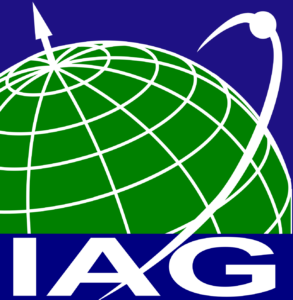JSG T.42 Theoretical developments and applications of combined methods for a better understanding of the Earth’s lithospheric formation, structure, and dynamics
Chair: Robert Tenzer (China-Hong Kong)
Affiliations: Commissions 2,3
Terms of Reference
The Earth’s lithosphere is a rigid, outer layer of the Earth, consisting of the oceanic and continental parts. The origin, formation, and geological history of the oceanic and continental lithosphere differ significantly. Whereas a relatively homogenous structure of the oceanic lithosphere is mainly controlled by its thermal state and mantle flow dynamics, the formation of a much more complex structure of the continental lithosphere involved early stages of the Earth’s cooling, the supercontinent cycle associated with the global tectonics, and many other geological processes. The study of the lithospheric structure and dynamics is essential for several scientific, societal, and economic aspects including the mitigation of natural hazard, the exploration of natural resources and geothermal energy, and the understanding of its influence on the Earth’s climate and environmental changes.
Seismic, gravity, magnetic, and heat flow data have mainly been used to investigate the Earth’s lithospheric structure. Seismic tomography (especially surface waves) and seismic reflection and refraction experiments provide images of the Earth’s inner structure, importantly of density interfaces (such as the sediment basements, crust-mantle boundary (commonly called Moho), and lithosphere-asthenosphere boundary). Seismic velocities could also be inverted for density and temperature, and seismic attenuation and seismic anisotropy are correlated with temperature and strain, respectively. Global heat flow measurements help constrain the lithospheric geothermal gradient and the Earth’s energy budget. Magneto-telluric studies image the Earth’s electrical conductivity. Gravity field manifests the Earth’s density structure and this information is used in studies of isostasy, lithospheric stresses, basement morphology, seafloor relief, or lithospheric elastic thickness.
Over the last few decades, the amount of these geophysical and geodetic data increased exponentially. Gravity dedicated satellite missions, for example, provide the information about the Earth’s gravitational field and its changes globally with a relatively high accuracy and resolution. The satellite altimetry measurements provide information about the sea level topography and have been used to determine marine gravity data that are further used to predict the seafloor relief. The Global Navigation Satellite Systems (GNSS) together with the Interferometric Synthetic Aperture Radar (InSAR) techniques have been essential in monitoring tectonic motions, ground deformations, and changes in glacier cover. The Very Long Baseline Interferometry (VLBI) and other space geodetic techniques have been providing extremely accurate information on the tectonic motions and the parameters of the Earth’s rotation and orientation, defined by the Earth’s orientation parameters (EOPs), namely the polar motion, precision-nutation, universal time (UT1), and the length of day. The substantial achievement in improved quality and increased amount of geophysical and geodetic data allows us to better understand the Earth’s lithospheric structure and dynamics as well as its relationship with other geoscientific studies (such as the relationship between the tectonic configuration and the oceanic-atmospheric circulation). Until now several theoretical models and methodologies have been developed and practically applied in modelling and prediction of various geophysical, geological, geochemical, and environmental phenomena that are related to the lithospheric structure and processes.
The substantial improvement of geophysical and geodetic data obviously offers a unique opportunity to develop and apply new methods that allow us to better understand already known as well as identify new phenomena and relationships in geosciences.
In the context of the current and future development, the focus of this study group is to develop and apply methods for a better understanding of the Earth’s lithospheric formation, structure, and dynamics based on joint processing of various geodetic and geophysical data and constraining information. We expect that our research activities will substantially contribute to the current knowledge of the lithospheric structure and processes, including but not limited to the compensation stage of the crust/lithosphere, the lithospheric strength, mechanisms behind the oceanic subduction, the relation between the mantle convection pattern and the global tectonic configuration (and its spatiotemporal variations), and influence of the lithospheric structure on EOPs. Among specific topics of a high interest a novel research question is the influence of the global tectonic configuration (involving not only the continental and oceanic configuration but essentially also the lithospheric thickness) and the lithosphere-asthenosphere interaction on the EOPs. In this context we will also conduct geodynamic studies to investigate the difference in polar motion between an observation-based terrestrial reference frame and Tisserand’s mean axes of the body (i.e., a mean mantle reference frame). The members of this study group will address some of these aspects within the following overall objectives.
Objectives
• Improvement of (regional and continental-scale) lithospheric density models based on combining geodetic and geophysical data and additional geological constraining information, focusing on regions with insufficient seismic data coverage.
• Development of a preliminary global density model of the mantle below the lithosphere asthenosphere boundary based on the combined analysis of seismic and gravity data, focusing on the seismic data conversion to mass densities within the gravimetric inversion scheme constrained by geothermal, geochemical, geodynamic, and other information.
• Contributing to a better understanding of the interaction between the mantle dynamics and tectonic motions.
• Improvement of the supercontinent cycle models.
• Study of the influence of the lithospheric structure and dynamics on EOPs.
• Study of the sea surface changes and its relation with the global climate change
Program of Activities
• Presenting research findings at major international geodetic or geophysical conferences, meetings, and workshops.
• Interacting with related IAG Commissions.
• Monitoring research activities of JSG members and of other scientists, whose
research interests are relevant to the scopes of JSG.
• Providing a bibliographic list of publications from different branches of science relevant to JSG scopes.
• Organizing a session at the Hotine-Marussi Symposium 2026.
Members
Robert Tenzer (China-Hong Kong), chair
Mohammad Bagherbandi (Sweden)
Mirko Reguzzoni (Italy)
Aleksej Baranov (Russia)
Franck Ghomsi (Cameroon)
Wenjin Chen (China)
Mehdi Eshagh (Sweden, Czech Republic)
Jianli Chen (China-Hong Kong)
Luan Thanh Pham (Vietnam)
Rebekka Steffen (Sweden)
Jose Manuel Ferrandiz Leal (Spain)
Bernhard Steinberger (Germany)



